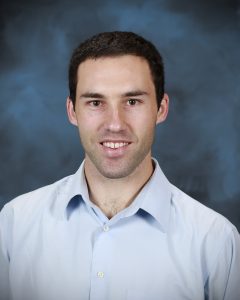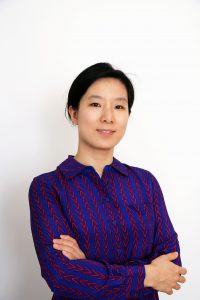

Photo: Amuthan Arulraj
Kanchana Nanduri SM ’13
Department of Civil and Environmental Engineering
Eni-MIT Energy Fellow, 2011–2012
When Kanchana Nanduri joined MIT in 2011 to pursue a master’s degree in transportation, she received an energy fellowship that would pay for a year of research in any field she chose. “I spoke to my professor,” she recalls, “and I told her I love transportation and I’m really motivated by sustainability. Is there any way we can come up with a problem that connects the two?”
Working alongside Associate Professor of Civil and Environmental Engineering Carolina Osorio, Nanduri developed a transportation thesis based on an energy-focused idea: optimizing traffic signals in a city to cut down emissions.
“Most of the research regarding traffic signals tended to be in the area of reducing travel time,” she says. “How do you make sure people at the signal experience minimal delays? The focus was mainly on the commute, not in terms of what these signals are doing for the car engines or for the environment.”
Using data on traffic lights and timing from 17 key intersections in the Swiss city of Lausanne, Nanduri and Osorio worked together to build a case study. “We came up with this really nice mathematical model using algorithms to figure out the optimal trade-off among signal timing, fuel consumption, and emissions when designing traffic lights in a city,” says Nanduri. “That’s how I really got into the field of energy.”
From simulations to the streets
Nanduri’s long-term goals involve transportation reform in the developing world. The summer after her first year at MIT, she flew to Mumbai—the most populated city in India—to intern with a transportation think tank called Embarq. Her work focused on collaborating with the city to reduce pedestrian fatalities by creating a handbook for city planners on how they should design intersections to improve driver visibility.
“It was different from my work at MIT, because everything in India is extremely chaotic,” she says. “In America, you can assume that when there’s a red light, the cars will stop. In India, you can’t assume that.” Faced with the challenge of quantifying behavior, Nanduri realized that even the best possible model on a computer might still be guaranteed to fail in the mayhem of city streets.
“It gives perspective to the fact that you shouldn’t get too comfortable,” she says. “You should always be thinking—when you go into the streets, into the chaos—is your work actually helping?”
During her 10-week internship, Nanduri asked exactly that question, drawing conclusions about where street design in Indian cities could be improved. Was the bus stop’s location obstructing traffic? Was the crosswalk too long for the timing of the signal? “There was no modeling involved—just plain application of common sense,” she says. “It was really an eye-opener for me. After that, I came back and resumed my graduate research, but it was a good reminder that there are things out in the real world that aren’t so easy.”
Building the experience
Now, as a member of the transportation planning team at Amazon, Nanduri focuses on ensuring that the company’s package-delivery system runs as energy-efficiently as possible. From placing delivery stations to determining truck routes, she thinks about how the team’s digital models will unfold off the screen.
As for the advice she has for students just starting out in the energy sector, Nanduri believes an open attitude is key. “Don’t set yourself on a career path too soon or decide you won’t do a certain kind of work,” she says. “Do everything challenging that’s thrown at you. You can figure out what it is that really motivates you, and soon you’ll be far enough along that path that you can really have an influence.”

Photo courtesy of Samuel Shaner
Samuel Shaner SM ’14, PhD ’18
Department of Nuclear Science and Engineering
ExxonMobil-MIT Energy Fellow, 2015–2016
Raised on the central coast of California, MIT alumnus and Energy Fellow Samuel Shaner grew up next to the state’s last remaining nuclear power plant. Conversations with his neighbors, many of whom worked at the plant, gave him a sense of what nuclear looked like in a real setting.
Today, with a startup company and a two-year US Department of Energy fellowship through the Innovation Crossroads program at Oak Ridge National Laboratory, Shaner is designing an advanced nuclear reactor that is optimized to meet the needs of future energy markets characterized by high renewables penetration. “I’ve always been interested in clean energy,” says Shaner. “It’s one of the key problems for my generation to solve.”
From the start of his undergraduate studies at the University of California, Santa Barbara, Shaner sought out coursework and research in clean energy. Guided by his advisor, Professor Eric McFarland, his efforts eventually brought him to MIT for a PhD in nuclear science and engineering. As for why he chose nuclear energy, Shaner says, “Ultimately, it was the technology I was most interested in and thought had the greatest potential for positive impact on our society.”
Understanding the supply chain
As a member of the MIT Computational Reactor Physics Group while a grad student, Shaner became familiar with the inner workings of a reactor. “The physics of what goes on in a nuclear reactor is pretty complex, and since it’s so hard to do experimental work on nuclear reactors, you need really high-fidelity models to form a virtual environment for reactor analysis,” he explains. “So, we were developing methods to be able to perform these high-fidelity simulations.”
Shaner’s work also extended beyond computer modeling. As an Energy Fellow, he studied the implementation side of nuclear, looking at the supply chain challenges of moving to uranium enrichments above the current 5% limit—a change that would allow nuclear reactors to run longer between refueling, produce less waste, and reduce costs. “It opened my eyes to the practical challenges of bringing new nuclear fuels and technologies to market,” he says. “That motivated the project I’m working on now.”
Shaner’s current focus is on his startup, Yellowstone Energy. He and his co-founder Matt Ellis saw the challenges that companies experience in moving to new fuel forms and systems that are not supported by current supply chains. “Our mission is to design an advanced nuclear reactor that leverages mature and commercially proven fuels and systems to enable a time- and capital-efficient pathway to market,” he says. Already, with a $25,000 grant from the MIT Sandbox Fund, they have filed for a patent on the enabling technologies for their design.
A long but rewarding road
Shaner and Ellis now spend “100% of the time” working on the startup, pushing their new design forward on all fronts. For example, they’re developing high-fidelity models of their design, are talking with experts in industry about licensing and regulation challenges, and will soon start experimental testing on key components.
But they acknowledge the time it’ll take to see results. “It’s a long road,” Shaner admits. “It’s probably the longest road for any technology other than fusion.”
Shaner urges students with an interest in energy to seek out an understanding of the markets along with the technologies. “As academics, we get really focused on the technology and somewhat lose sight of the market where energy fits in and what attributes customers are interested in,” he says. He encourages students to take multidisciplinary energy classes and to get involved with the MIT Energy Initiative if possible, since many of MITEI’s members are key players in the energy industry. “The MITEI fellowship was really helpful for what I’m doing now,” says Shaner. “It really provided the motivation and clear picture of the challenges in bringing new technologies to market.”

Photo: Yoav Reches
Nan Zhao PhD ’17
Media Arts and Sciences
Shell-MIT Energy Fellow, 2013–2014
When Nan Zhao looks up at a building, she doesn’t just see a structure of glass or concrete. She sees a complex ecosystem, with factors from lighting to acoustics— and an opportunity to optimize those factors not only for energy efficiency, but also for human happiness and productivity. “I think there’s much to improve in buildings,” says Zhao. “There’s great potential for reducing energy use based on understanding how the building is used.”
Zhao’s upbringing in Germany and China cultivated her understanding of the distinct character of living spaces. “I saw a lot of different living environments and habits of managing the home,” she says. “How people saved energy in Germany was different from how people saved energy in China.” When she came to MIT, Zhao focused her research on intelligent lighting, hoping to reduce lighting’s high energy consumption.
Illuminating disciplines
From 2011 to 2017, Zhao worked as a research assistant in the MIT Media Lab’s Responsive Environments group. “I took it very literally, making responsive environments,” she laughs. “I worked on combining lighting networks with sensors and physiological monitoring to enable personalized, closed-loop control. Knowing people’s respiration, heart rate, and brain activity in response to changes in the environment can inform how the environment should change and adapt to their activities.”
At first, Zhao concentrated on optimizing aspects like brightness level and color to improve energy efficiency. She quickly realized, though, that intelligent lighting wasn’t just an opportunity to save energy; it could also tailor spaces to their inhabitants. “The size of the space, acoustics, objects, smells—all of it has a measurable impact on people’s psychology,” says Zhao. “It became another dimension in my work: tuning the environment to create restorative conditions for the person.”
Over time, Zhao felt her work stretch across disciplines. “My interests grew in different domains, such as psychology and design, and I started to see connections between them,” she says. For example, she points to the human biological clock: “One dimension of lighting relates to productivity and people’s ability to focus, learn, and memorize. We’re discovering more and more how light plays a role in terms of alertness and circadian rhythm.”
Her 2013 energy fellowship not only supported her research but also enabled her to connect with industry leaders over their common goal of energy efficiency. “It was great to show them our vision of how light can play a role in the dynamic design of indoor environments,” she says.
Creating intelligent spaces
In 2015, Zhao and two other women co-founded a smart urban furniture startup called Soofa. “We started with the idea of bringing clean power to public spaces, with solar-powered benches that anyone could use to charge their phone,” she says. “We deployed 12 of them around Boston, and people responded very quickly and positively. They became a sort of symbol for a smart city.”
Most recently, the startup has set up free-standing, solar-powered sidewalk displays that allow users to upload content with an app. “The idea is to create a networked community blackboard where people can easily upload content about events,” Zhao explains. Displays in Boston feature local artist performances, subway schedules, and even birthday wishes.
As a research scientist at the MIT Media Lab, Zhao now focuses her efforts on refining the workspace. “I’m working on a platform for offices that controls different parameters in the space, such as light and sound, to re-create the feeling of being somewhere,” she says. She notes that we choose different places for different activities—perhaps a coffee shop to answer email, a quiet library to study, or an outdoor bench to write something creative. “We naturally choose different environments for different things, because they help us in achieving those things,” she says. “I’m trying to bring some of those elements into offices to make them more dynamic and adaptable so they can better support people’s well-being and productivity.”
This article appears in the Spring 2018 issue of Energy Futures.